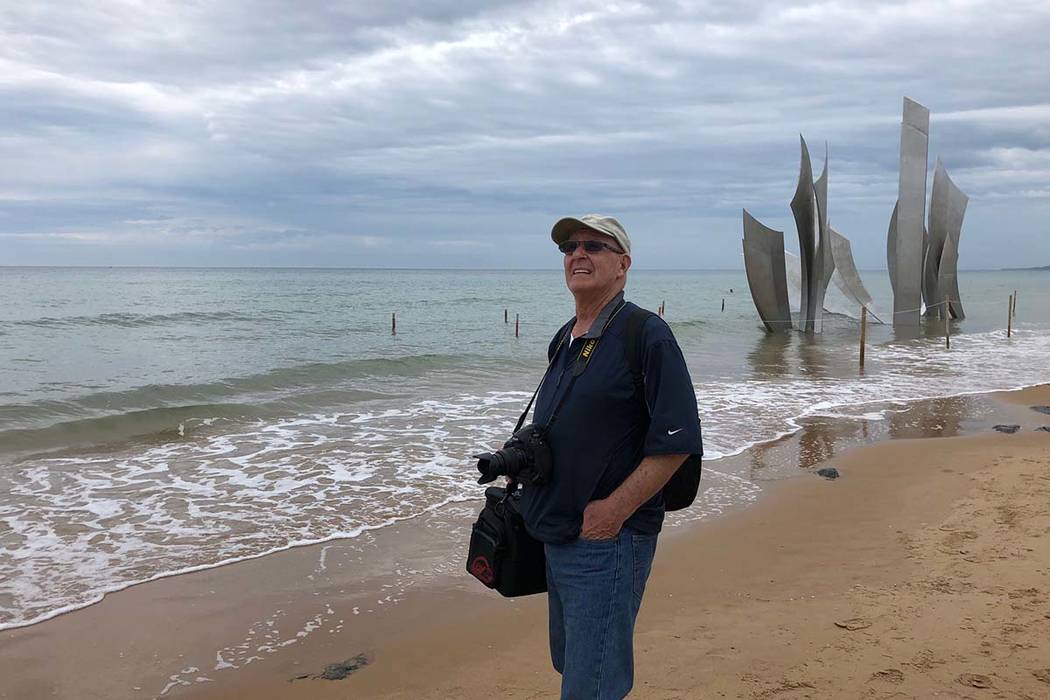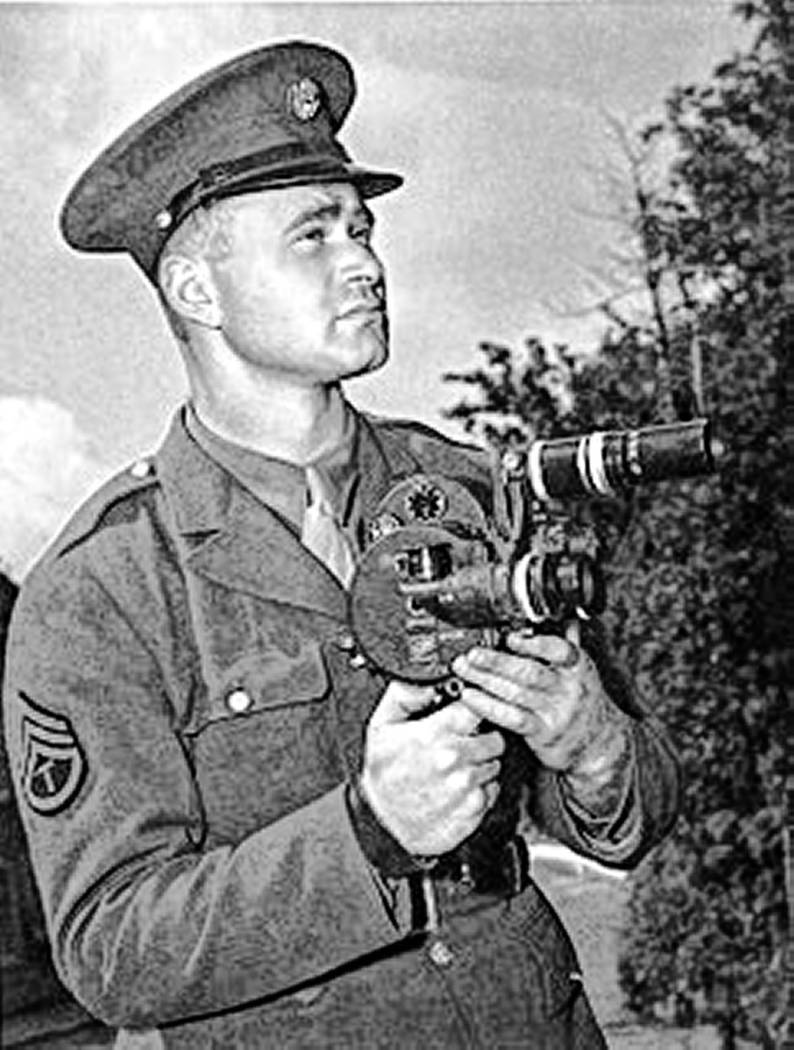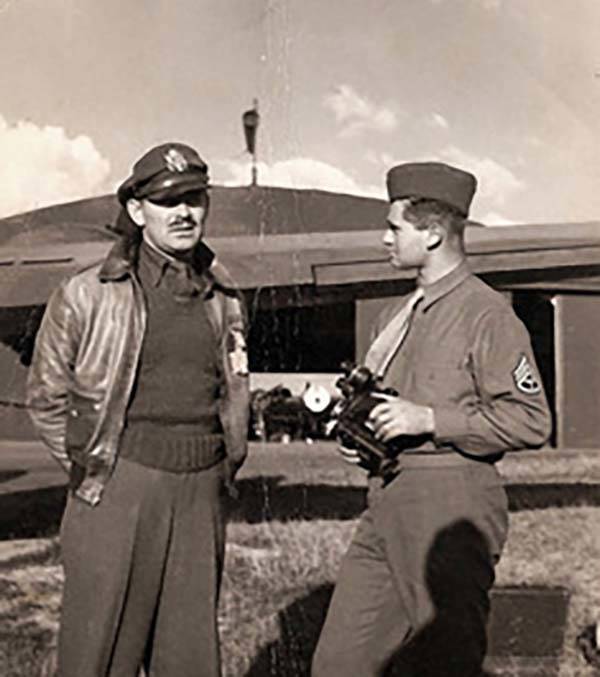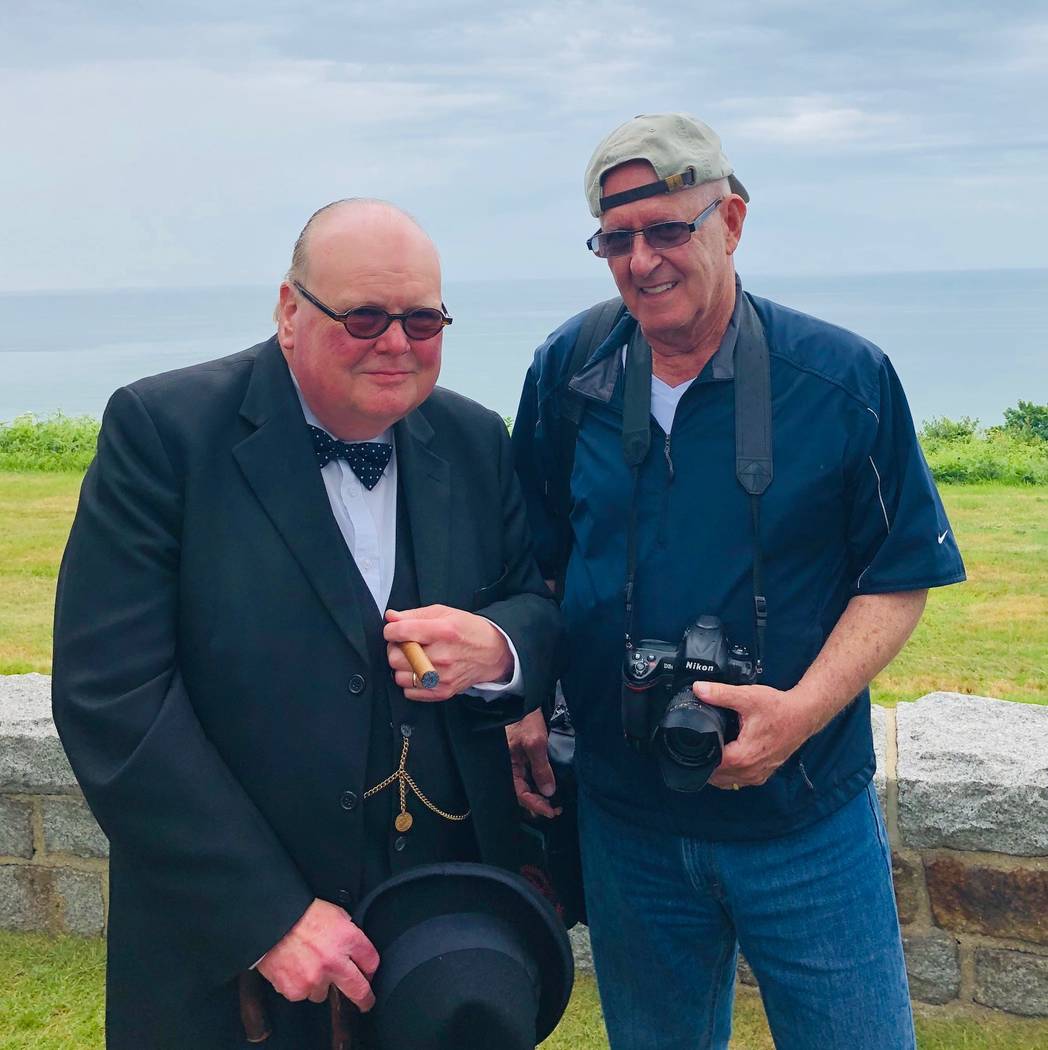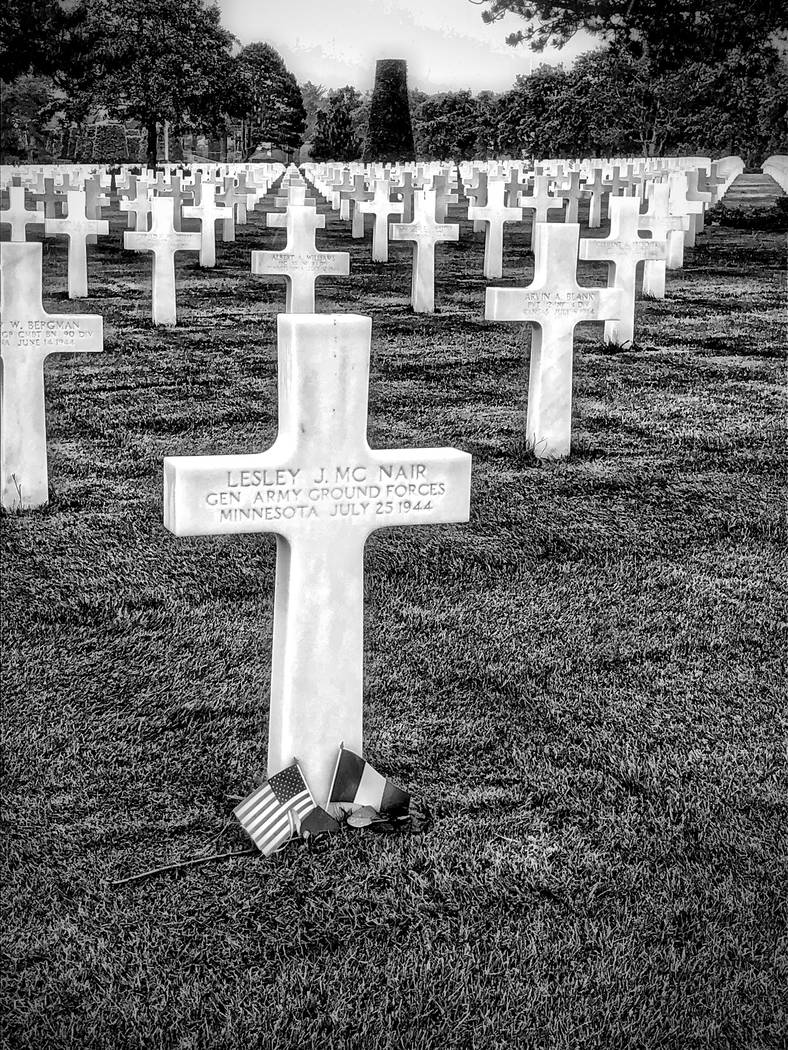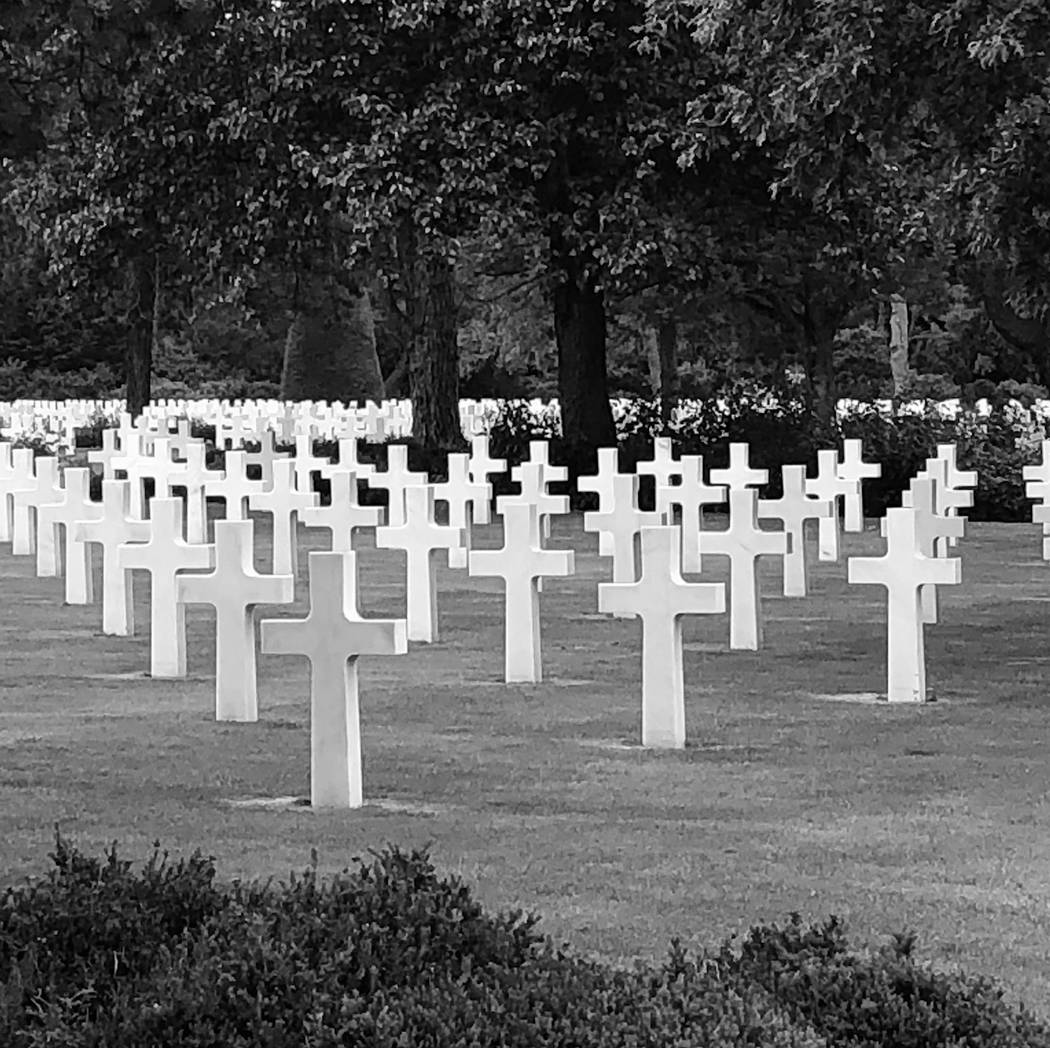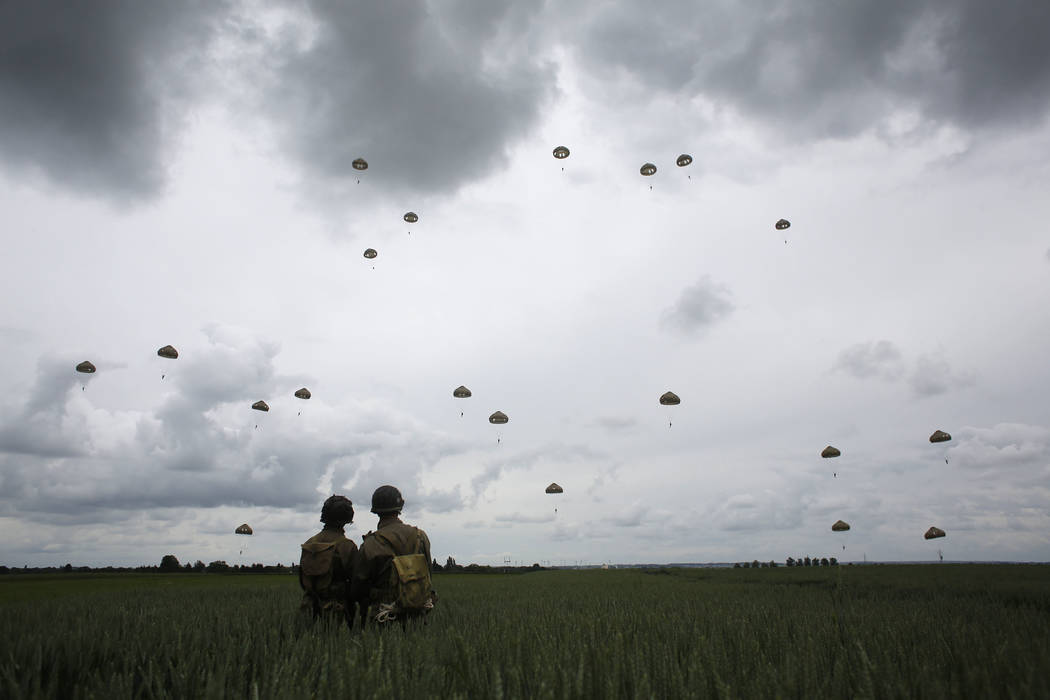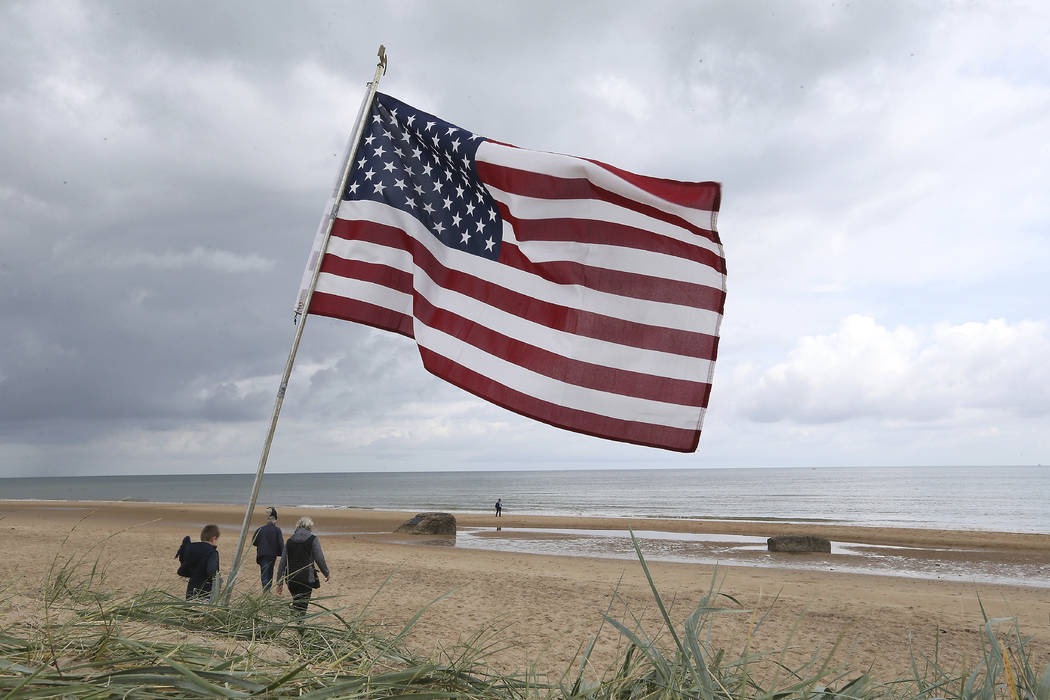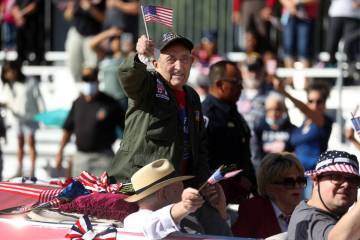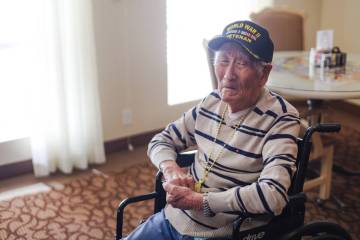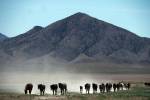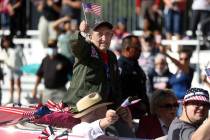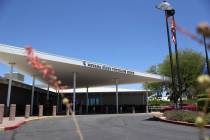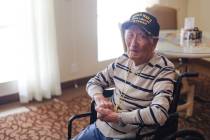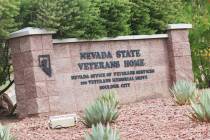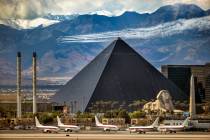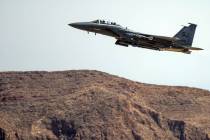Las Vegas man travels to Normandy to honor father’s D-Day exploits
Barry Hartman this week is walking the same path his father did — just 75 years later and without gunfire and artillery shells raining down on him. Hartman left his home in Las Vegas late last week for France, in order to remember his late father on the anniversary of the D-Day invasion of France on June 6, 1944.
The risky maneuver would cost the Allies some 10,000 men, but it was a decisive turning point in World War II.
Countless tales of valor live on from the early days of the invasion, but Hartman’s father, Burton “Bud” Hartman, played a unique role in the conflict: He captured much of it on camera.
The Army motion picture cameraman is credited with being the first American photographer to land on Omaha Beach that day. He continued filming over the months that followed the D-Day landing, marching alongside the fighting men as they passed through France, Central Europe and North Africa. At the end of the war, he filmed the liberation of the Dachau concentration camp in Germany.
“It’s a big year, the 75th anniversary, and I wanted to put a bow on his legacy. It’s something I have to do,” Barry Hartman, 72, said last week. “I’m honoring the Fifth Commandment; honor my mother and my father.”
‘Open mind and open emotions’
Barry Hartman also is following in his father’s footsteps in another way. Before leaving, he packed his Nikon with three extra lenses and a smartphone for short video. He hoped to record interviews with the veterans who were there.
“I’m going with an open mind and open emotions,” he said. “I want to take in as much as I can.”
Hartman, the oldest of three boys, grew up in California’s San Fernando Valley and remembers watching his father develop prints in the darkroom. He picked up his first camera at 17. Later, he worked freelance photojournalism assignments and as a professional photographer.
After his father, who was later awarded the Silver Star for bravery, passed away in 2000, Hartman said he began thinking more about his father’s service.
“He never spoke to us about his experiences,” he said. “But the surviving veterans, now they’re talking about their experiences.”
He saved up the thousands of dollars necessary to join a commercial tour for the 75th anniversary commemoration.
Since arriving in Europe, he has toured the war room headquarters in London, where British Prime Minister Winston Churchill met with other Allied leaders for about a year to plan the invasion in France. He toured the Imperial War Museum, loaded with World War II planes, tanks and German rockets.
Then on Tuesday, Hartman stepped onto the sands of Omaha Beach, site of the bloodiest battle of D-Day, where his father, a young soldier with the 165th Signal Corps, filmed and photographed the initial waves of the assault on the German defenses for three days.
As he prepared for the trip, Hartman uncovered dozens of letters that his father had written to his wife, Esther, known as “Penny.”
It helped paint the picture of what his father had experienced in the spots he would be revisiting.
Destruction and close calls
In one letter dated July 16, 1944, and sent from “somewhere in France,” Burton Hartman wrote to his wife that his day had started at 10 a.m., with a bang of heavy artillery.
Later, he and a comrade nicknamed Toddy took a jeep into town to see if they could “pick up a few stories.”
They stopped at one of the many small villages that had been under shell fire.
“The destruction and waste is appalling but the real tragedy appears when the occupants usually evacuated before the fighting begins, return to the scene and shambles of what they once called home,” Burton Hartman wrote.
Later in the afternoon, while traveling between two outposts, the pair realized they were under enemy fire. They pulled up beside a couple of ready-made foxholes and took cover.
“For the next five minutes, shells were dropping around us faster than prices in a loop bargain basement,” he wrote.
During a comparative lull, the situation struck the young soldier as funny. He crawled out and took a picture of Toddy, huddled and curled up in his private sanctuary. Toddy then climbed out with a sheepish look on his face and said, “Well, they’re still coming in close. Let’s get the hell out of here,” Hartman wrote.
They jumped in the jeep, but had only rolled a few feet when a blast threw them forward. Shrapnel, dirt and gravel rained down on them. The foxholes they were just in were replaced with a crater bigger than the jeep.
“Toddy just turned, looked at me, and made that never to be forgotten statement,” Hartman wrote. “‘Guess we’ll have to pay that income tax yet.’”
In another letter dated July 2, 1944, Burton Hartman told his wife that he viewed his role as a documentarian as a crucial one.
‘Come hell or high water’
“Men have been killed and men will be killed and nothing is more urgent at the present time than to bring a picture of reality to all those people back home who know nothing of the grimness and horror of this present conflict,” the photographer wrote.
“… The boys who should be written up and glorified are those who are up in the front-line companies, the boys who know what it really means to be under shellfire day and night, and who are doggedly going ahead come hell or high water. I’ve been with them and lived with them and I can think of nothing worthy to put on paper that could tell of their heroism.”
The elder Hartman would likely be comforted to know that the sacrifices made on five bloody beaches during the D-Day invasion live on 75 years later.
His son said he has seen French and American flags flying side by side this week in homes, businesses and monuments. Veterans, some who were as young as 18 at the time, were there to recount their experiences. He visited the American cemetery, where nearly 9,300 soldiers are buried.
“It borders on surrealism,” Barry Hartman said by email Tuesday. “It is truly a profound emotional experience. So much love, respect, gratitude being exchanged among so many people coming together to be part of something bigger than ourselves.”
He also noticed other Frenchmen in Normandy, clearly too young to have served in the conflict, wearing U.S. military uniforms. He stopped to ask them why.
“Unanimously, they reply ‘So we don’t ever forget,’” he said.
Contact Briana Erickson at berickson@reviewjournal.com or 702-387-5244. Follow @ByBrianaE on Twitter.



